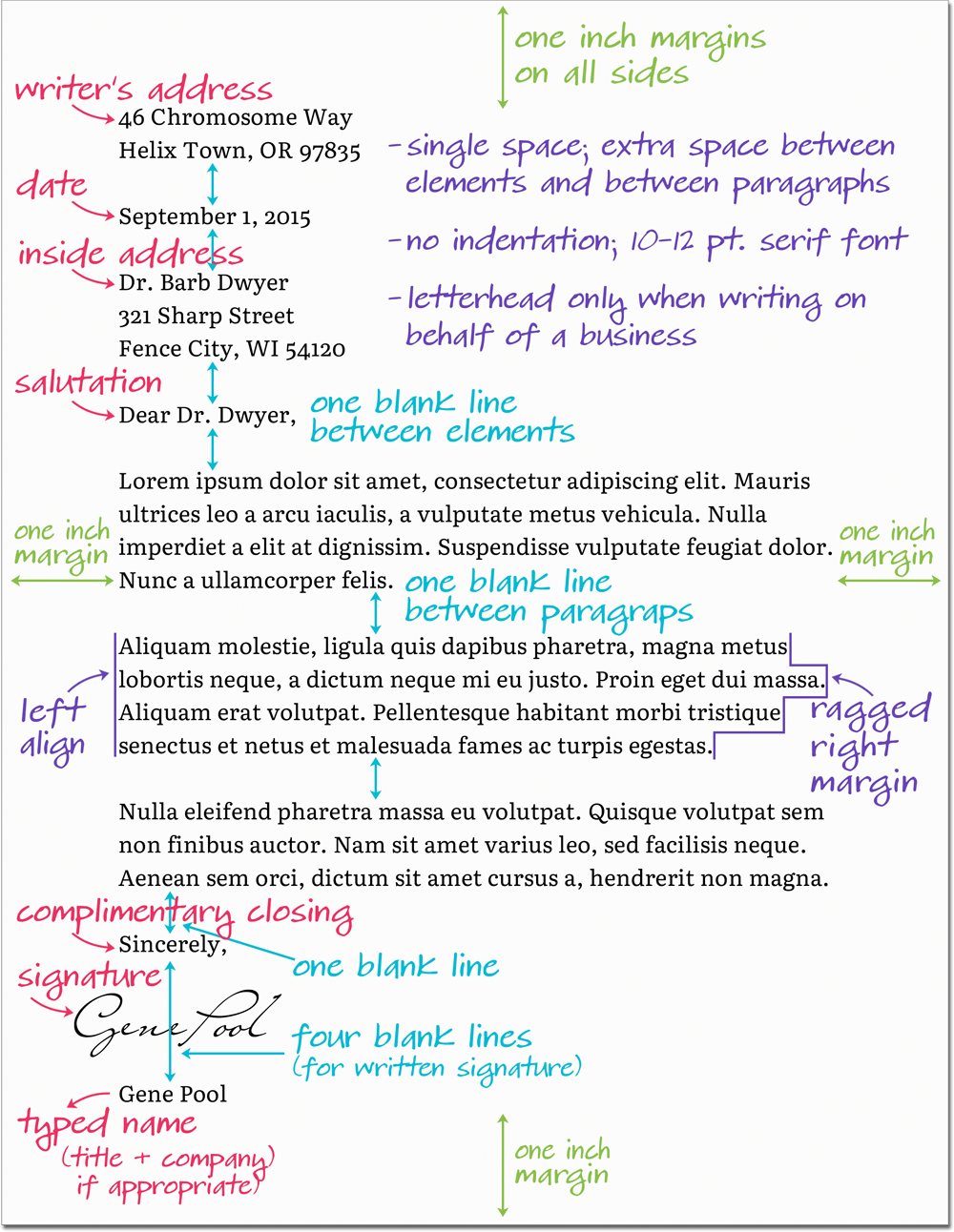Business Letters: Types & Formatting
Professional Letter Types
Personal business letters are written to a business or organization on your own behalf. In other words, you are writing as a person/private citizen – not as a representative of the company you work for or the organization your associated with. For example, if I write a letter of complaint to the “quality standards” division of whole foods markets to report finding a cricket in a bag of prewashed kale, I am writing as a private citizen (not as a representative of FAU). Thus, my letter is a personal business letter.
Business letters are written to 1) other businesses/organizations or 2) individuals on behalf of the business/organization to which the writer belongs. For example, if Jane Smith, Director of Quality Standards at Whole Foods, writes a letter of apology to me in response to my complaint, Jane Smith is writing on behalf of the company she works for (not as a private citizen). Since she is writing as the voice of the company, her letter is a business letter.
Professional Letter Formats & Punctuation[1]
Block Format: The entire letter is left aligned with a ragged right margin.
Modified-Block Format: All lines except the date, closing, and signature block align at
the left margin. The date, closing, and signature block begin at (or to the right of) the center of the page.
With Indented Paragraphs: Both block and modified block formats may also include indented paragraphs.
Open Punctuation: No punctuation following the salutation or closing.
Mixed/Standard Punctuation: A colon follows the salutation and a comma follows the closing.
Closed Punctuation: A comma follows the salutation and closing.
Additional Pages: If a letter extends to a second, third, etc., page, the second and subsequent pages have a header indicating the page number. The header may also include the recipient’s name and/or date, though opinions vary on whether this information is required and how it should be formatted. For personal business letters, it’s a matter of personal preference and consistency. For business letters — when you write as a representative of a company you work for or organization you belong to — check to see if your business/organization has a style guide or editorial guide that indicates preference.


